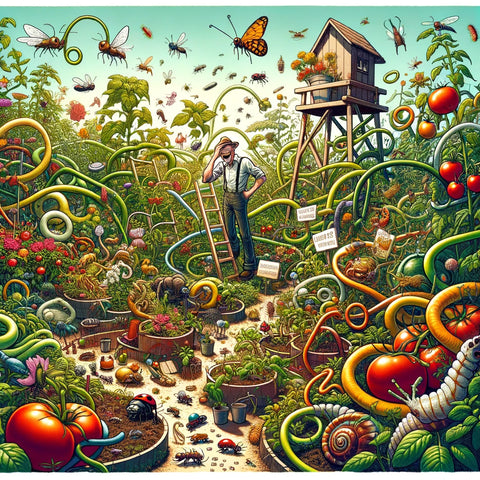Navigating Permaculture Landscapes
The Umpteenth Time I Got Lost While Trying to Plan a Permaculture Garden
Permaculture
Embark on a comedic and educational journey with a man as he navigates the complex world of permaculture landscape design. Investigate sustainable gardening practices to determine their efficacy.
The procedure is more akin to an adventurous journey through an unexpected forest for a guy like myself who has experimented with permaculture garden design. Imagine trying to stage an opera where every single plant, insect, and bacterium has its own internal clock. That's what permaculture is all about.
My motivation for delving into permaculture was to build a garden utopia that could sustain itself. I was fully expecting to wreak havoc with my too basic understanding of gardening and my limitless enthusiasm. I had no idea that permaculture design is like a Rubik's Cube for gardening.
My initial takeaway is that straight lines are nonexistent in the natural world. Attempts at geometric precision were met with disapproval by every single photosynthesising creature, bug, and spider in my garden. Carrots were among the first plants to develop traits that might deceive a compass. Alternatively, the tomatoes seemed to be behaving autonomously, spreading out with a lack of consideration for personal space that would make a subway ride at rush hour seem appealing.
I quickly realized that permaculture is a diplomatic effort with Mother Nature, going beyond merely cultivating plants. Whether it's a sprout or an unsightly insect, nature usually has its own idea when you suggest planting something. At its core, this process is about negotiating, which teaches us patience, perseverance, and compromise.
The concept of companion planting was another sobering lesson. I was foolish enough to think that I could just line up my vegetables the way they would look in my Instagram feed. It was humorous for nature and insects alike. The flavors and associations of plants, it turns out, transcend the stress of junior high. Basil and tomatoes are like a happily married pair in the yard; who would've thought? Or that marigolds could be just as good as bouncers in keeping pests at bay?
But the most crucial thing I picked up is that soil isn't just dirt; it's the base of every plant. Talking to worms, promoting the decomposition of my pile, and turning organic waste into nutrient-rich gold for my plants is all part of composting, and I found the process fascinating.
My permaculture garden, like life, has been full of ups and downs, lessons learned the hard way, and many of tears (mostly from chopping onions). Despite the unpredictability and chaos, I am really satisfied. In it, human ingenuity and scientific understanding are like threads in a living fabric. Every living thing in this garden contributes something special to the whole, weaving a story of interdependent, mutually beneficial abundance.
If you're new to permaculture, here's something to keep in mind: nature is funny, and the secret to a well-designed garden is to be prepared to laugh at your own shortcomings. Laugh at the chaos, focus on the ground, and every once in a while, let the plants do the talking. To a gardener, it's all about keeping up with nature's symphony in the grand opera that is permaculture.






Leave a comment